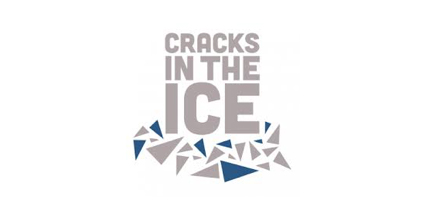| | |
|
Abstinence
(from AMPH, MA, or Amphetamine-Type Substance [ATS]) (n=51) | Urine Drug Screen (UDS) (n=10) | Comparing proportion of participants in each group demonstrating abstinence in the final 2 weeks of study – abstinence defined by having all UDS test negative and providing at least two UDS per week (n=2) |
Weekly proportion of negative UDS (or weekly proportion of positive UDS) (n=2) |
Proportion of UDS testing negative during the study (n=2) |
Treatment Effectiveness Score (TES):
average of the sum of negative UDS submitted per participant in each treatment arm (n=1) |
|
|
|
|
|
|
|
| Days since last use (n=1) |
Abstinence for 21 days any time during the study period (n=1) |
Days per week (e.g. self-reported non-use days) (n=4) |
Frequency of use in prior 2 weeks (AMPH, MA, ATS) (n=1) |
|
Time Line Follow Back (TLFB) (n=3) |
Opiate Treatment Index (OTI) (n=1) | |
Changed use / reduction in use (n=4) | Reduction in UDS positive metabolites (n=2) | Decrease in average weekly log10 median urine MA concentrations over treatment period |
| Amongst those who previously achieved abstinence (n=1)
Relapse for participants with negative MA UDS at baseline (n=1) |
| Visual Analogue Scales (VAS) (n=16) | 7 mm (point) VAS (n=1)
100 mm (point) VAS (n=5) |
Brief Substance Craving Scale (BSCS) (n=6) |
Stimulant Craving Questionnaire (STCQ) (n=1) |
“Desires for Speed” modification of “Desires for Alcohol” Questionnaire (n=1) |
Craving-Questionnaire-Now version (CQ-Now) (n=1) |
| |
Amphetamine Cessation Symptoms Assessment (ACSA) (n=1) |
Methamphetamine Withdrawal Questionnaire (MAWQ) (n=1) |
| Addiction Severity Index (ASI) / ASI-Lite (n=10) |
Severity of Dependence Scale (SDS) (n=3) |
Amphetamine Selective Severity Assessment (ASSA) (n=1) |
| Beck Depression Inventory (BDI) (n=1) |
Montgomery-Åsberg Depression Rating Scale (n=2) |
Centre for Epidemiologic Studies Depression Scale (CES-D) (n=4) |
Hamilton Depression Rating Scale (HAM-D) (n=4) |
Beck Depression Inventory II (BDI-II) (n=1) |
Depression Anxiety Stress Scale (DASS) (n=1) | Full scale and sub-scores |
| Hamilton Rating Scale for Anxiety (HAM-A) (n=1) |
Beck Anxiety Inventory (n=1) |
Anxiety State Index (n=1) |
Psychological Distress (n=1) | |
| Brief Symptom Inventory (BSI) (n=1) |
Positive and Negative Symptoms Scale (PANSS) (n=1) |
Clinical Impression (n=9) | Clinical Global Impression Scales: Observer (CGI-O) (n=3) |
Clinical Global Impression Scales: Self (CGI-S) (n=4) |
Retention in Treatment / Study (n=11) | | Days admitted as inpatient (n=3)
Number of days received study drugs following first dose (n=1)
Number of days attended from randomisation to the final study visit (n=1)
Provision of at least one UDS during Week 8 of study (n=1)
Days between first study drug infusion and last clinic visit (n=1)
Study drug doses collected (n=1)
Number of treatment days during outpatient treatment until the last clinical contact (n=3) |
Participant Satisfaction (n=1) | | Percentage of participants completing active medication, mean number weeks in treatment (n=1) |
| Self-report using AIDS Clinical Trials Group Questionnaire (ACTG) (n=1) |
|
Medication Event Monitoring System (MEMS) caps (n=2) |
Study drug metabolites in urine (n=2) |
|
| HIV Risk-Taking Behaviour Scale (HRBS) (n=1) |
HIV Risk Assessment Battery (n=1) |
Audio Computer Assisted Interview (ACASI) for self-report (n=2) | Number male partners
Number male partners with whom MA used
Episodes anal sex (insertive / receptive) with HIV serodiscordant partners
Drug use
Substance use treatment
Sexual risk behaviour |
Attention Deficit Hyperactivity Disorder (ADHD) (n=3) | Adult ADHD Clinical Diagnostic Scale (ACDS) (n=1) |
Adult ADHD Investigator Symptom Rating Scale (AISRS) (n=1) |
Barratt Impulsiveness Scale (n=1) |
| Cambridge Neuropsychological Test Automated Battery (CANTAB) (n=1) |
| Serious Adverse Events (SAE’s) / Adverse Events (AE’s) (n=3) |
Physiological Indicators (n=4) | Vital statistics (n=3)
Electrocardiogram (ECG) results (n=1) |
| The Quality of Life Inventory (QoLI) (n=1) |
|
Global Assessment of Functioning (GAF) score (n=1) |
| Sheehan Disability Scale (n=1)
|
| Athens Insomnia Scale (AIS-5) (n=1) |
St Mary’s Hospital Sleep Questionnaire (n=1) |
Other substance use (n=3) | | Weekly number cigarettes in smoker subgroup (n=2)
Carbon Monoxide tests (n=1) |
Other adverse effects (n=4) | Liver Function Tests (LFTs) (n=1) |
Abnormal Involuntary Movement Scale (AIMS) (n=1) |
Barnes Akathisia Scale (BAS) (n=1) |
Simpson Angus Scale (SAS) (n=1) |





